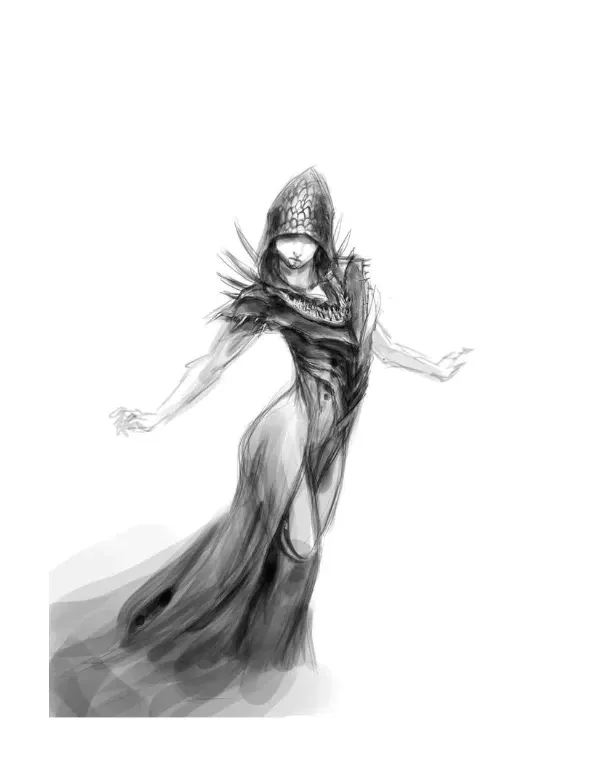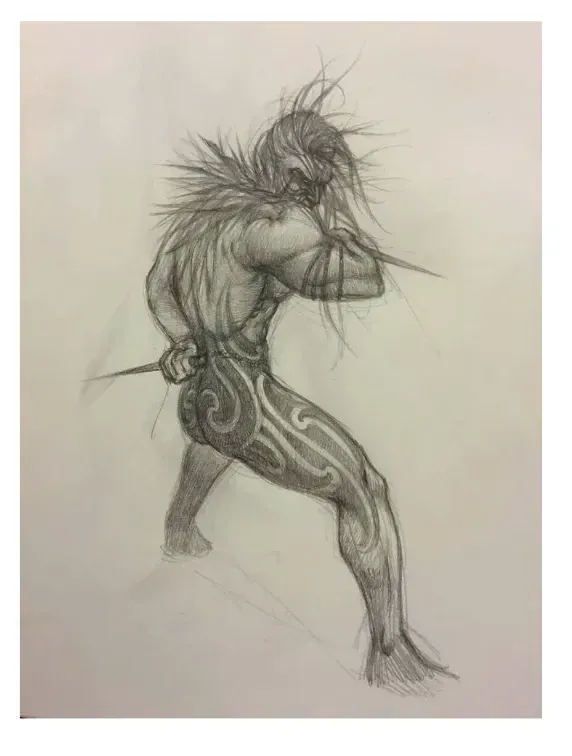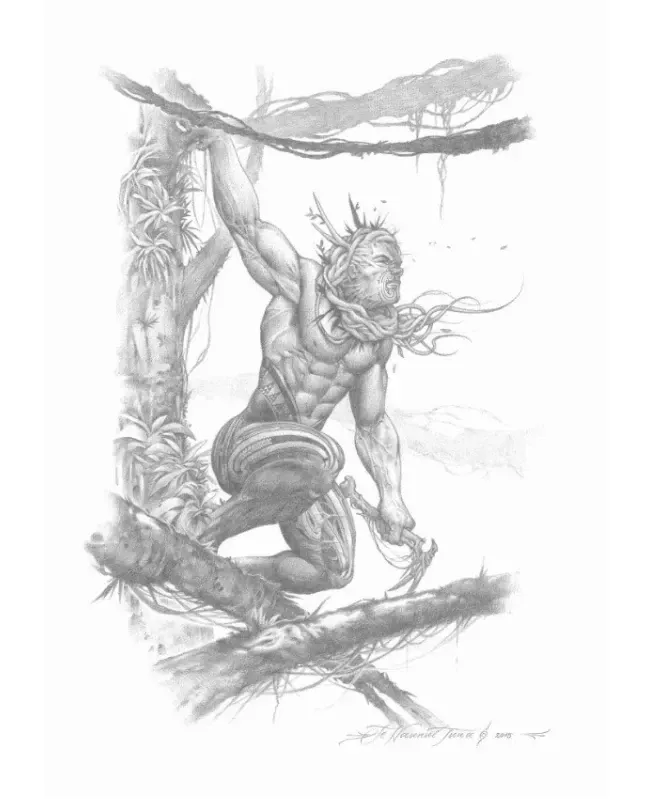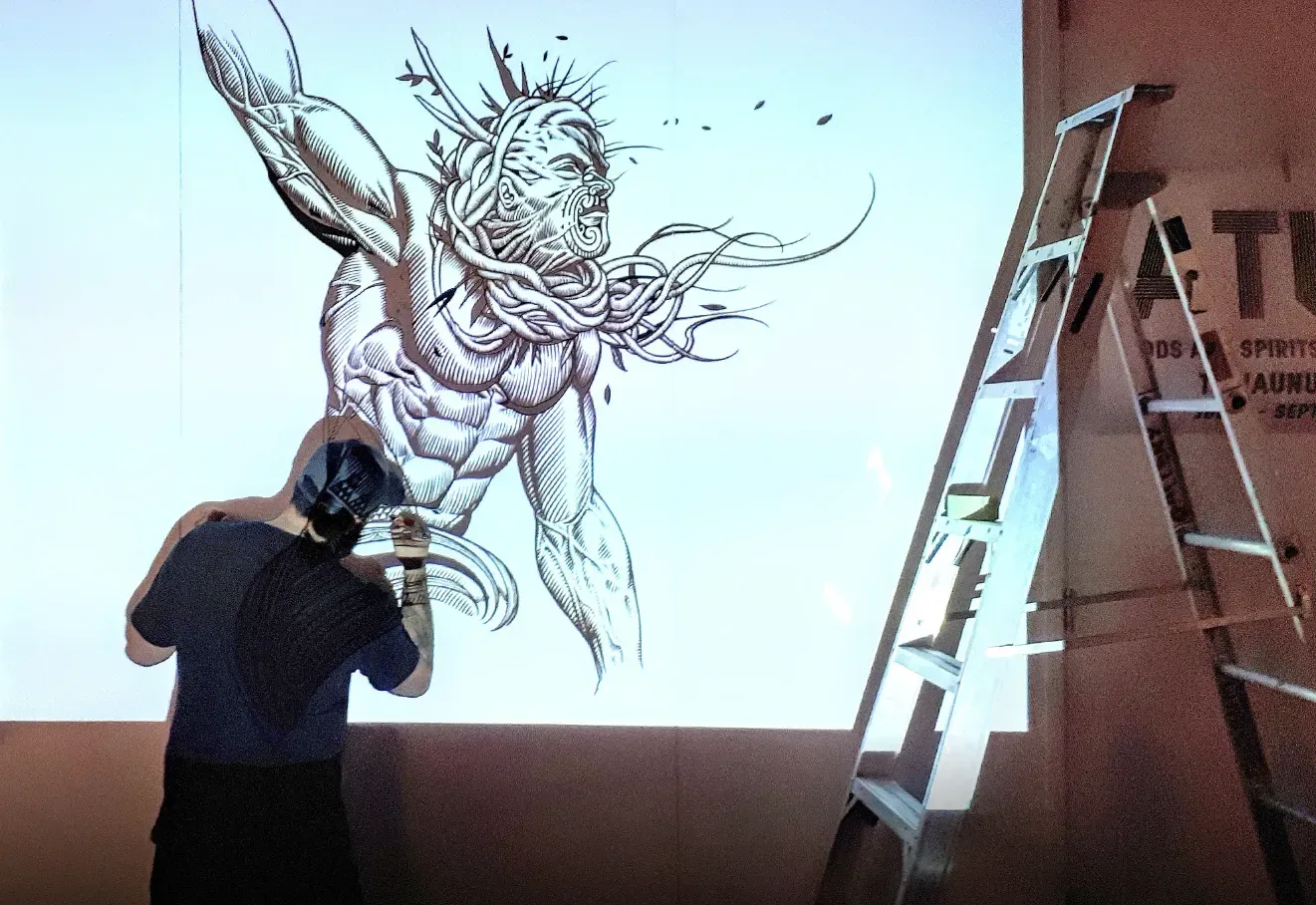Atua: Spirits and Gods of Aotearoa by Te Haunui Tuna at Whakatāne Museum
Written by
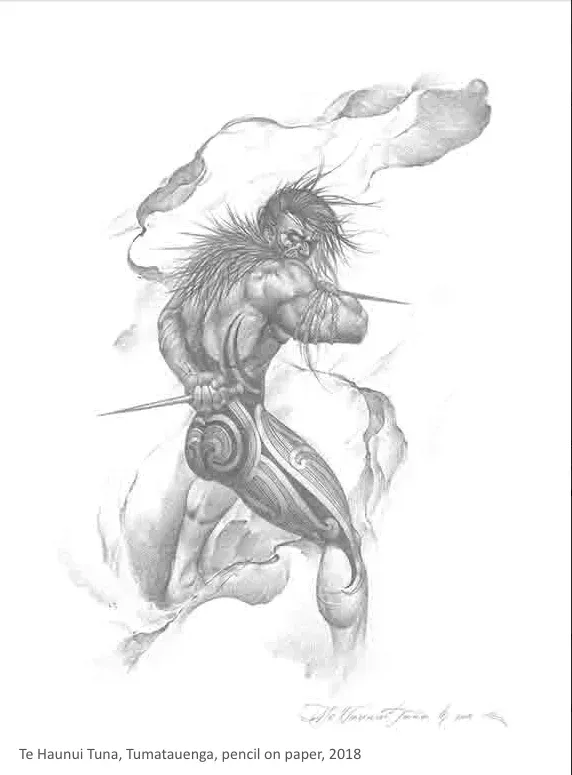
Every now and then, remarkably creative people come along who share ideas and big plans. Te Haunui Tuna is one of those people. He comes from Waimana, Ngai Tūhoe, and attended Whakatāne High School before completing a Bachelor of Media Arts at Wintec in Hamilton. When Haunui arrived in the Whakatāne Museum offices late last year to show his latest drawing project—the mythological personifications of his ancestry—the gallery staff were captivated. The museum team immediately began talking about projects and creative opportunities, from murals to posters to books. Atua, the exhibition that opened at the museum's galleries at Te Kōputu on 7 July, is just the start.
Te Haunui Tuna has been drawing ‘muscled, warrior-looking men’ his whole life. He found early inspiration in his father's school-boy drawings and the sculpted weapon-wielding characters of fantasy artists Boris Vallejo and Frank Frazetta. More recently, he began this collection of work based on what he knew about the Māori gods. Prompted by his partner Sonny in 2015, Te Haunui delivered a new sketch of a different Māori god every week and began sharing the drawings with a growing audience on social media. The idea and project gained followers, and they decided to bring it to Whakatāne's small galley team.
With Atua: Spirits and Gods of Aotearoa, visitors to the Whakatāne Museum get an honest look into the illustrative workings and incredible craftsmanship of an emerging local artist. His depictions also offer a new way to visualise and learn about part of our shared cultural identity. "People would get in touch with me and tell their Atua stories," says Te Haunui, "and I would sketch what I thought the gods would look like. Often, I learnt new stories that added their own visual layers and ideas."
As an artist, it is clear that Te Haunui Tuna is concerned with the future of the stories behind his Atua.
"I know a lot of nannies and koro grew up in an era where stories were passed down verbally, and that was important. Now, not a lot of people ask to hear them, and they get lost. I want future generations to share the same stories and value them as we have."
The exhibition is on view 2 September and features six completed drawings, about a dozen works in progress, two larger paintings of Atua, and a brand new mural created for the gallery wall.
"In his own right, Te Haunui is a kind of artistic superhero," says Museum Director Eric Holowacz, "bringing a courageous and fearless approach to his work and the kaupapa that guides everything he does."
Te Haunui's pictures reveal an artist who has transformed his ideas and stories and onto paper, canvas, mural walls, tattoo art, and even digital technology, movies, and gaming.
"I want to use all forms of art to inspire Māori people to be more than their environment shapes them to be," says the artist. "I believe showcasing my work in all these ways helps remind people of their rich history and culture. Mahue marae au I taku kāinga, whakamanawa mai aku atua Māori.”
From the 52 drawings that have appeared on social media, Te Haunui has selected these drawings and Atua stories to be re-told for Whakatāne Museum.
"This project is just the beginning of a grand story," says Holowacz. "because that's how superheroes work."
As part of the development of the exhibition, Whakatāne Museum gallery assistant Jordan Davey-Emms sat down with Te Haunui Tuna to discuss early inspiration, his Ta Moko career, capturing stories, and going down a good rabbit hole...
Please tell me a bit about yourself!
My name is Te Haunui Tuna. I’m from Waimana, and I’m an artist. I studied at Rotorua Boy’s High for a couple of years, then came back to Whakatāne High, and then did my tertiary study in Hamilton at Wintec.
What does your current creative practice involve?
I’m a full-time tattoo/Ta Moko artist at the moment, but I’m retiring in September this year. That will mark twelve years of tattooing. I’m moving towards other creative things. I’m definitely doing more drawing and painting at the moment. I’m getting into photography and cinematography as well.
Please talk us through the ideas behind your upcoming exhibition, Atua.
This whole thing came about at the end of 2014. I’d been drawing Māori gods and warrior-looking dudes for most of my life, and at the end of that year, [my partner] Sunny suggested that I do a sketch of a Māori god every week for 2015 and upload it to social media. It started out just as something to do weekly, and it ended up turning into this! Over the years the idea has just grown bigger and I started noticing other things I could do with the concept. Having an exhibition in Whakatāne was definitely the main thing I wanted to do with it.
It’s about revitalizing things, right? Bringing them into the everyday?
Yeah, to start talking about things. Because I remember being a kid hearing all these stories, and thinking, oh—those are epic! But I never saw images for them, or cartoons, or anything.
So this project is really about pulling them back out again into a form, and keeping people talking about them. Especially for little Māori kids, so they can be like, “Yeah, I know who that is!”
What is the influence of conceptual art and comics on the work you create, which often draws on older things—Māori heritage, Atua Māori, and so on?
My dad has been the biggest influence on me, creative-wise. He was my art teacher at Primary School. He would always show me fantasy art—artists like Boris Vallejo, Frank Frazetta, and his own personal artwork as well. That influenced my aesthetic. It’s what got me into drawing musclemen and all that stuff! Then as I grew up, and got into kapa haka and learning about Māori gods, then gaming and movies. They just went hand in hand.
I was always interested in concept art, which is part of the development stage of creating characters for movies. It started out as something that looked real cool to me, and then it turned into a way that I could sort of get my own word in. Like, yeah, I’m Māori, I like all of these things—and I can bring those in, and sort of follow that aesthetic. It’s what I’ve become known for – drawing Māori gods, but I look everywhere, not just at Māori art. I try to take inspiration from anywhere. My approach ends up creating something that’s different, and it is something I love doing.
You feature many well-known Atua Māori in your works like Tāne Mahuta, Ruaumoko, and Tangaroa. But you’ve mentioned learning of new stories as your project grew. How did this come about?
When I was doing the sketches every week in 2015, I would land on which Atua to draw through research online. Sort of like when you’re studying at uni—you know, get three different references to prove that something was true or not. If I could find at least three different references for a certain Atua, I would go from there. Usually I need about a sentence to be able to get an idea in my head. I also asked one of my uncles if he knew any, and he gave me a list of like one-hundred Atua! I knew two of them. I was like, wow, how have I never heard of the other ninety-eight? From then I realized that this was going to be a huge rabbit hole to go down...
Things like that have been great. It’s cool that it has started a conversation around Māori gods. People have been saying, “This is an Atua from where we come from” and would give a whole spiel in their comments and messages, and the stories grew. It was like, this is cool! This is what the project is for; so we can share our stories. There’s definitely been heaps of learning.
What would you tell other young people who are interested in pursuing a creative career?
I would say now’s the easiest time to get into it, because of the internet. It’s easy to get your work out there for free. The internet has made the world smaller. All you need is your phone to promote your work—and everyone’s got a phone. Just keep drawing and keep working at it! It’s stuff you’ve heard a million times...
Look at artists you like, see what they do and what they’ve done to get there, and emulate it. That’s what I’ve done. Emulate it until you find your own thing, and then run with it. I reckon the fastest way to do it would be to find people you like and send them a message, or do what they’ve done. And don't stop learning. I think a lot of people get to the point where they just settle. I could easily keep on tattooing for the rest of my life. But I’m excited about being the small fish again, and not knowing how to do certain things. That’s the exciting stuff. The learning that is ahead.
It’s a really hard industry to make a good living from. A lot of [successful creatives] have side jobs. But I would say, especially to younger people, to just keep working at it, and to make the artwork that you like. Don’t make artwork that people say will make the most money. I’d rather make less creating artwork that I love, instead of, you know, making millions creating artwork that I hate! Create the stuff that you like, I reckon. And don’t give up.
I think that’s it, unless you have anything else you’d like to say?
Yes—it would probably be, to creatives young and old. It’s a really hard industry to make a good living from. A lot of [successful creatives] have side jobs. But I would say, especially to younger people, to just keep working at it, and to make the artwork that you like. Don’t make artwork that people say will make the most money. I’d rather make less creating artwork that I love, instead of, you know, making millions creating artwork that I hate! Create the stuff that you like, I reckon. And don’t give up.
What do you hope the public will learn and take away from your exhibition?
I hope that people who visit Whakatāne Museum will want to learn about the stories we already have. Because I know that at high school, when you learn about history, most of the time it’s about history from other places. I know of heaps of Greek gods! I’m not even Greek.
I know that a lot of Nannies and Koros grew up in an era where stories were just passed down by word of mouth. And I know a lot of them love to talk and share stories, but not a lot of people ask them to. Maybe this can prompt them to share those stories and not lose them from one generation to the next. People are dying as the last to know certain stories and certain histories. This project is a way to help save all of these stories, to put them down so they can’t get lost. That wasn’t initially the reason, but it became clear over the last couple of years. I’d like for people in maybe three generations time to have the stories we’ve been talking about now. I’d like them to be around forever.
That’s what libraries and museums are for—so those stories don’t get lost. That's why I first knocked on the door of Whakatāne Museum and sat down to talk about showing my Atua to the community and to the world I live in.
Whakatāne Museum Presents Atua by Te Haunui Tuna, July Exhibitions at the Whakatāne Museum Galleries at Te Kōputu, Artist Te Haunui Tuna's Website
